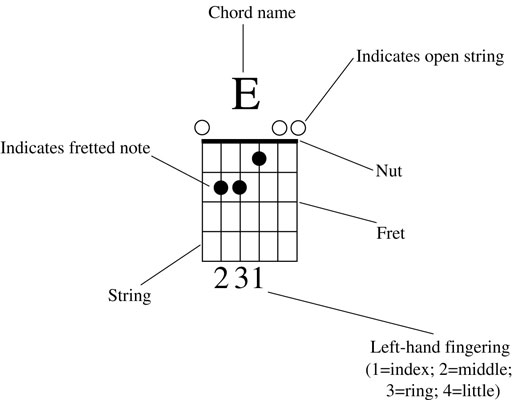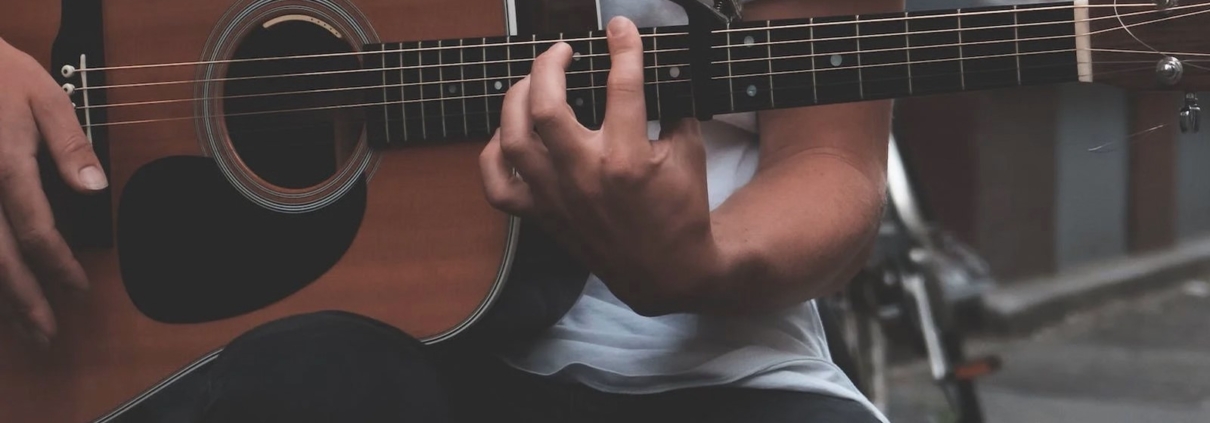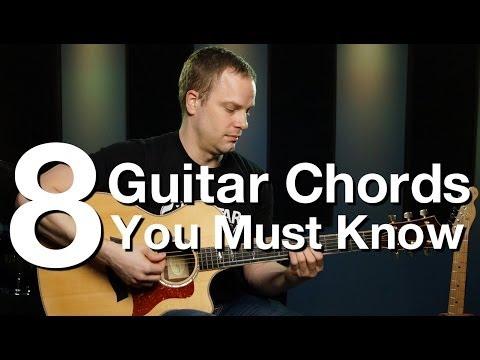So you’ve finally decided to pick up the guitar and embark on your journey to musical stardom. But before you start shredding like Hendrix or serenading like Swift, you’ll need to master the essential chords that will serve as the building blocks of your repertoire. Fear not, dear reader, for we have all the tips and tricks you need to rock out like a pro in no time. Grab your guitar pick and get ready to strum your way to greatness!
Contents
- 1 Understanding the Foundations of Chord Progressions
- 2 Exploring Open Chords: Your Gateway to Guitar Mastery
- 3 Mastering Barre Chords for Versatile Playing
- 4 Incorporating Power Chords into Your Repertoire
- 5 Developing Strumming Patterns to Complement Chord Changes
- 6 Expanding Your Musical Vocabulary with Seventh Chords
- 7 Practice Strategies for Effective Chord Transition and Memorization
- 8 FAQs
- 9 Ready to Rock and Roll?
Understanding the Foundations of Chord Progressions
So, you want to dive into the fascinating world of chord progressions, huh? Well, buckle up because you’re in for quite a musical ride! Chord progressions are like the building blocks of a song, the glue that holds everything together, or the secret sauce that makes your favorite tune oh-so-catchy. Let’s break it down, shall we?
First things first, let’s talk about the I-IV-V progression. This bad boy is like the holy trinity of chord progressions – it’s everywhere! Picture it like the Three Musketeers of the music world, always ready to swoop in and save the day. The I-IV-V progression is made up of the tonic, subdominant, and dominant chords, creating a harmonious blend that will have you tapping your foot in no time.
Next up, we have the classic ii-V-I progression. Think of this one as the Batman and Robin of chord progressions – a dynamic duo that never fails to impress. The ii-V-I progression is all about tension and resolution, taking you on a musical journey that will leave you wanting more. It’s like the perfect plot twist in a blockbuster movie, keeping you on the edge of your seat until the very end.
And let’s not forget about the circle of fifths – the ultimate cheat code for chord progressions. This nifty little circle is like a musical compass, guiding you through different keys and helping you create those oh-so-sweet progressions that will make your audience swoon. It’s like having a treasure map to the world of music, unlocking doors you never knew existed.

Exploring Open Chords: Your Gateway to Guitar Mastery
So you’ve decided to take the plunge into the world of guitar playing, huh? Well, lucky for you, open chords are here to save the day! These bad boys are like the key to unlocking the guitar kingdom, so get ready to rule the fretboard like a boss.
With open chords, you’ll be able to strum along to all your favorite songs and impress your friends with your newfound musical prowess. Plus, they’re super easy to learn and will have you shredding like a rockstar in no time.
Forget those pesky barre chords for now, open chords are where it’s at. They’re like the training wheels of the guitar world – once you’ve mastered them, the sky’s the limit! So grab your guitar, tune up those strings, and get ready to embark on a musical journey like no other.
So what are you waiting for? Dive into the world of open chords and watch as your guitar skills skyrocket. Before you know it, you’ll be strumming and picking your way to guitar mastery, leaving all those barre chord aficionados in the dust. So go forth, young grasshopper, and conquer the guitar world with your newfound open chord knowledge!

Mastering Barre Chords for Versatile Playing
So you’ve decided to tackle barre chords, huh? Congratulations on taking one of the most challenging steps in a guitarist’s journey. Barre chords can be notoriously difficult to master, but fear not – with a little practice and determination, you’ll be playing them like a pro in no time.
First things first, make sure you’re using the correct technique. Remember to keep your thumb directly behind the neck of the guitar and use the side of your index finger to press down on the strings. It may feel like you’re trying to crush the guitar neck at first, but that’s all part of the fun!
Next, it’s time to start practicing different barre chord shapes. Try experimenting with different positions on the neck to see how the sound changes. Don’t be afraid to get creative with your finger placement – after all, versatility is the name of the game when it comes to barre chords.
And finally, don’t forget to incorporate barre chords into your playing. Whether you’re jamming with friends or playing a solo gig, barre chords can add a whole new dimension to your sound. So go forth, brave guitarist, and conquer those barre chords like the rock star you were born to be!

Incorporating Power Chords into Your Repertoire
Alright, aspiring rockstars, it’s time to take your guitar playing to the next level by adding power chords into your repertoire. These bad boys are like the meat and potatoes of rock music – simple, powerful, and oh so satisfying. So grab your guitar, crank up the amp, and let’s rock and roll!
First things first, let’s talk about what exactly a power chord is. In simple terms, a power chord consists of just two notes – the root and the fifth – making it easy to play and perfect for beginners. The best part? You can move these bad boys all around the fretboard, creating that signature rock sound that’ll have audiences headbanging in no time.
Now, let’s talk about how to play these bad boys. Simply place your index finger on the root note and your ring finger on the fifth, and voila – you’ve got yourself a power chord. You can play these bad boys as full chords or palm mute them for that extra bit of crunch. Experiment with different strumming patterns and amp settings to find your signature sound.
So there you have it, rockstars – power chords are the key to unlocking your inner guitar god. Practice, experiment, and most importantly, have fun with it. Before you know it, you’ll be shredding like a pro and melting faces with your rockin’ tunes. Keep on rocking!

Developing Strumming Patterns to Complement Chord Changes
So you’ve mastered your chords and now it’s time to spice things up with some killer strumming patterns to really impress your audience. Developing strumming patterns that complement chord changes is like finding the perfect dance partner – they need to work together seamlessly to create a magical performance.
First things first, let’s talk about the importance of rhythm. Your strumming patterns should enhance the overall feel of the song and add depth to the chord changes. Don’t be afraid to experiment with different strumming techniques – mix it up with some upstrokes, downstrokes, and accents to keep things interesting.
One tip to keep in mind when developing strumming patterns is to pay attention to the timing of your chord changes. Make sure your strumming pattern flows smoothly from one chord to the next, creating a seamless transition that will leave your listeners in awe. Experiment with different speeds and syncopation to find the perfect rhythm for each section of the song.
Remember, developing strumming patterns is all about adding your own personal flair to the music. Don’t be afraid to get creative and think outside the box. Whether you’re playing a soft ballad or a rock anthem, finding the right strumming pattern to complement your chord changes will take your performance to the next level.
Expanding Your Musical Vocabulary with Seventh Chords
So you’ve mastered your basic major and minor chords, huh? Feeling pretty confident in your musical abilities? Well, get ready to take things up a notch with seventh chords!
Seventh chords add a whole new level of complexity and richness to your musical repertoire. They’re like the spicy jalapeños of the chord world - they might be a little intimidating at first, but once you get used to them, you won’t be able to stop adding them to everything you play.
With seventh chords, you can create that extra layer of tension and resolution that really makes a piece of music pop. It’s like adding a dash of salt to your favorite dish – it takes it from good to gourmet in an instant.
So go ahead, dive into the world of seventh chords and watch as your musical vocabulary expands in ways you never thought possible. Before you know it, you’ll be throwing around terms like dominant seventh, minor seventh, and half-diminished like a seasoned pro. Trust me, your ears will thank you.
Practice Strategies for Effective Chord Transition and Memorization
So, you want to become a guitar god or goddess, but those pesky chord transitions are giving you a hard time? Fear not, dear shredder! I’ve got some killer tips to help you conquer those chord changes like a pro.
First off, let’s talk about muscle memory. No, I’m not suggesting you start bench pressing your guitar (although that would be metal as hell). I’m talking about training your fingers to move between chords without even thinking about it. The key is repetition. Practice those transitions until your fingers move like lightning.
Next up, let’s talk about visualization. No, I’m not suggesting you meditate on your guitar (although that could be enlightening). I’m talking about mentally picturing each chord shape in your head before you even play it. Visualize those finger placements, and you’ll be amazed at how much easier it is to switch between chords.
And finally, don’t forget about the power of chunking. No, I’m not talking about regurgitating your lunch (although that would be gross). I’m talking about breaking down those chord progressions into smaller chunks and practicing them individually. Once you’ve mastered each chunk, put them all together for seamless transitions.
FAQs
Why is it important to master essential chords when building your first guitar repertoire?
Because if you don’t, you’ll end up sounding like a cat being strangled every time you try to play a song. Trust me, your audience will thank you for putting in the effort.
How can I make learning essential chords more fun and less tedious?
Why not spice things up by pretending you’re a rock god in training? Play each chord like it’s the crescendo of your greatest hit. It’s much more satisfying than feeling like you’re stuck in chord hell.
What are some common essential chords that every beginner should master?
Oh, just your typical A, E, and G. You know, the chords that make up like 90% of all songs ever written. No big deal, just the key to unlocking the magical world of music.
How can I practice and solidify my mastery of essential chords?
Repetition, my dear Watson. Play those chords until your fingers bleed (not literally, but close enough). The more you practice, the more confident and masterful you’ll become.
Any tips for building a solid guitar repertoire using essential chords?
Start simple with some classic three-chord songs. Once you’ve nailed those, you can move on to more complex tunes that will truly showcase your newfound chord mastery. Rock on, my friend!
Ready to Rock and Roll?
Congratulations on mastering essential chords and building your first guitar repertoire! Now it’s time to dazzle your friends, impress your crush, and maybe even start a band. Remember, practice makes perfect, but it’s also totally fine to just strum away and have fun. So go forth, my fellow guitar hero, and let those sweet melodies ring out loud and proud. Keep on rocking! 🎸🤘



